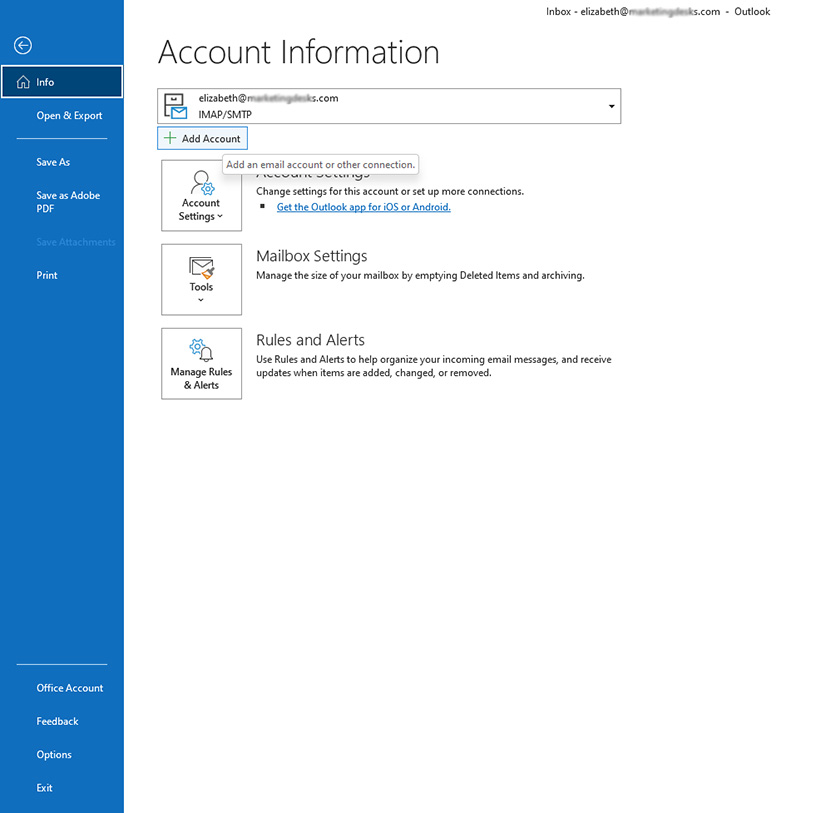
- MICROSOFT OUTLOOK BUSINESS EMAIL HOW TO
- MICROSOFT OUTLOOK BUSINESS EMAIL SOFTWARE
- MICROSOFT OUTLOOK BUSINESS EMAIL WINDOWS
Enter your company information and payment information.
MICROSOFT OUTLOOK BUSINESS EMAIL HOW TO
Examine the available plans (under the "For business" page) to choose the one that includes the applications your firm needs, then click the "Buy now" button.įollow the prompts to create your account, and then choose how to sign in. To begin, go to the Microsoft 365 website. To set up Office 365, follow these steps: Step 1. Follow the prompts to set up your account with them by connecting it through the domain or creating an email address for receiving correspondence from businesses in Outlook! To get started, go to Microsoft and select a business plan. Setting up your company email in Outlook is simple.
MICROSOFT OUTLOOK BUSINESS EMAIL SOFTWARE
Outlook is a popular productivity software from Microsoft that has many features. Outlook is one of the best business email programs on the market, and it's included with Microsoft 365. So, whether you're a beginner or need a refresher, read on for all the info you need! Setting Up Microsoft 365 for business email (Office 365 business email) We'll cover everything you need to know about setting up your Office 365 business email. Plus, you can access your email from any device or computer with an internet connection. With Office 365, you'll have access to all the features of Outlook, including calendar and contacts, as well as other applications like Word, Excel, and PowerPoint. This guide will walk you through the process step by step. However, figuring out how to set up your Office 365 (also known as Microsoft 365) email account for your business can be difficult. How Do I Set Up My Office 365 Business Email?Įmail is a necessary part of business communication. Now, it will be even harder.Help safeguard business data with built-in security features
MICROSOFT OUTLOOK BUSINESS EMAIL WINDOWS
It’s already been difficult enough for third-party developers apps to step in and improve the increasingly integrated Windows interface. But now, by killing Mail and enforcing Outlook as your fully integrated Windows email solution, Microsoft is really squeezing the life out of third-party development. Ditto for Web browsers, calendaring apps, and so on. Stifling competitionīy having a discrete email client-Mail-Microsoft has always held the door open for potentially better email clients to step in. Surely, we can figure out a way to preserve personal and corporate accounts in the same interface, and simply prevent employees from inadvertently copying data from one to the other? I like specific, purpose-built apps, but redundant apps? No thank you. This is the whole stupid “ personal Teams” / “professional Teams” thing, again. Apparently you’ll need to have both the separate Outlook app for work, as well as the Outlook for Windows app for personal use. Instead, the new app only consolidates multiple personal accounts. The new Outlook app does not, and you’ll receive a message saying so. With Mail/Calendar, I can keep my work meetings on the same calendar as my personal dentist and doctor appointments, simply because Calendar accommodates both work and personal accounts.

The more you feed it information about who you’re talking to, what is being discussed, and so on, the better Copilot should theoretically operate. This matters because Outlook (and many other components within Windows) will eventually become inputs for Microsoft’s Copilot AI engine.

First, by funneling everyone into a single email application for all our accounts (yes, even Gmail, Yahoo Mail, and more), Microsoft will learn more about what we’re talking about. So why is Microsoft force-feeding us Outlook? The reasons for Microsoft’s decision are pretty much spelled out in Microsoft’s Outlook announcement post.

In my tests, the app crashed a couple of times, without losing any data, but then became stable. You can then flip back within Outlook by returning the toggle to its previous state. Current Mail and Calendar users can test-run the new interface by toggling the “try the new Outlook” toggle in Outlook’s upper-right-hand corner, which flips the interface to the new look. But now Microsoft plans to replace Mail and Calendar with the unified Outlook app interface, beginning next year.


 0 kommentar(er)
0 kommentar(er)
